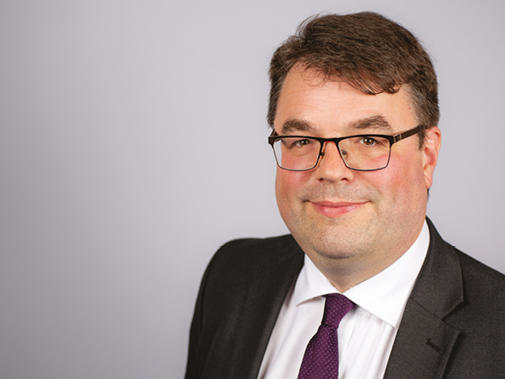When Tom Grinyer arrived at the BMA a year ago as the new chief executive, he could not have imagined what the association would be looking like now.
An increased membership, high media profile but the buildings in London, Edinburgh, Cardiff and Belfast almost empty. The 500 BMA staff working at home, blessing and occasionally cursing the technology which is enabling the association to carry on its work during the greatest public health emergency in living memory.
Although we are further apart, we have never been closer togetherTom Grinyer
Mr Grinyer says the organisation has had to respond quickly to the pandemic as the different aspects of it became apparent, at times on a daily or hourly basis. From when there were some in government saying the approach should be based on herd immunity, to the scandalous shortages of PPE (personal protective equipment), to the concerns with testing, easing the lockdown, wearing face masks in public, and a dozen other issues.
He says this has been achieved by bringing together staff and members for regular, briskly paced online meetings. ‘What’s been crucial is bringing together doctors from across the branches-of-practice chairs, chief officers, subject matter experts, with staff from all levels of the organisation to coordinate our response.’
New working practices
Mr Grinyer says this is not only efficient but – in an organisation which has historically been at times accused of being rather hierarchical – ‘it’s been hugely democratising because everyone is in an equal-sized square’ on the screen.
Just as the profession is doing, he says the BMA needs to look at what might be the positive legacy of the changed working practices. It’s not necessarily going to be a return to exactly the same situation.
‘We want to take the best, we want to take the learning, we want to take what works,’ he said.
The pressure to change will not come solely from a review of the different working practices, but from financial realities. While the BMA has welcomed several thousand new members during the crisis, it has also seen a severe drop-off in its events and learning and development income.
‘We are going to have to start a debate about what we do and how we do it better; as one member of staff said to me although we are further apart, we have never been closer together,’ he says. This might include online meetings being the norm rather than face-to-face, given that they have generally been thought to work well.
Standing up for members
While there may be uncertainties ahead, one definite is that the BMA is probably busier than at any other time in its history. The figures for member support are striking. Between January and May, there were 19,000 new cases opened to support members, a 19 per cent increase on the same period last year. There were 34,000 calls (up 10 per cent) to the BMA’s support team, 12,500 emails (up 44 per cent) and 3,200 web chats (a 16 per cent increase).
What’s been crucial is bringing together doctors from across the branches of practiceTom Grinyer
Members expect the BMA to do a job for them, and often to take robust action on their behalf. Mr Grinyer says: ‘I’m really proud of the role we play – the muscle of the trade union, the solutions of the professional body. At a time when the issue of PPE was at its height, we were damned right to be raising that at the highest level. We also needed to support members so opened our support 24 hours, seven days a week.
‘As one BMA council member said, “if not us, who?”. All the other organisations out there, they may be campaigning organisations, but we have to hold that member’s perspective, negotiate as a trade union, guide as a professional body and get traction with the Governments of all our four nations, and still have that conversation the day after as well.’
With a background in civil service unions and medical royal colleges he is proud of the trade union and professional sides of the BMA – two facets it has had for decades and which have sometimes led members to feel they have to favour one side over another. But the pandemic has helped to dispel misconceptions that, the trade union side was ‘practical’ whereas the professional one somewhat more abstract and theoretical. He says he has received, for example, a great deal of praise for the robustness and practicality of the BMA’s ethics guidance.
Freedom to speak up
Mr Grinyer arrived at the BMA during another very challenging time. Daphne Romney QC had been asked to conduct an independent review following reports of sexist behaviour by members.
The report spoke of the need for ensuring diversity and gender balance, for robust action to be taken against harassment, discrimination and bullying, and for a culture where bad behaviour could be called out. Among many recommendations, Ms Romney said every committee member should undergo training in areas such as diversity, equality and anti-bullying.
He says: ‘This report was a backdrop to my appointment, and as soon as we received it I wanted to get out there and get on with tackling what was in it.’
Mr Grinyer points to the extensive training which has taken place, the wide-ranging debate around behaviours and the recent appointment of Mary Walsh as the BMA’s first freedom to speak up guardian.
What the Romney report spoke to was a change in the BMA’s culture. What she or anyone else could not have predicted is how profound that change in culture would be, thanks to the arrival of a certain virus.
He says the BMA has had to be fast, cohesive and effective, and that while it will always have more work to do in tackling discrimination in all its forms it has risen to the challenge. Keeping this legacy, once its exceptionally hard-working members rid Britain of the virus, will no doubt be his key priority.’

